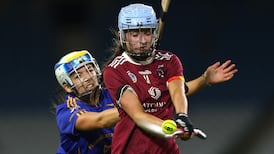One of the problems with being a monolith is that random cracks spell trouble. The GAA has always prided itself on moving forward more or less united as an institution. Cautious of change until consensus or at least a critical mass emerges, the association has been wary of division – sometimes to an exasperating extent.
Little worthwhile gets achieved without division and the biggest issues the GAA has faced and resolved have generally progressed matters and any opposition tends to melt away, as the wisdom of the new departure becomes obvious.
At present however, there is no guarantee of consensus on many of the big current concerns. The split season is presumed likely to continue because of the territory conceded to club activity, which has been popular with players and membership.
This has not played out though like other reforms, such as the opening of venues to other sports, the benefits of which became crystal clear as soon as the €37 million rent for the use of Croke Park was distributed in capital grants.
READ MORE
In fact it has become less unusual to hear people express slight remorse about the things that were lost in the arrangements for the new world, like the loss of All-Ireland promotion in schools and the fast-forwarding rate of the championship summer.
The very first split season, improvised by Covid-19 was rapturously received – to the point that it became a firm favourite over the summer of 2020 despite not having appeared as a calendar option earlier in the year.
Player reaction then was hugely positive and the new format was duly rubber-stamped for the seasons to come.
It led to different counties taking different approaches.
Wexford initially took some flak for conducting its championships sequentially rather than running football and hurling on alternate weekends. The format worked a treat that year for its hurling champions Shelmaliers, who shared 13 players with the club’s footballers and were thrilled to have two distinct seasons.
It’s fair to say that that general positivity has qualified a little.
Those most impacted are intercounty players, who if they remain largely supportive, have also drawn attention to the fact that because of how their county season runs into club schedules, some inevitably end up with injuries they have accumulated in the county season.
In Wexford, the view has evolved that finishing the hurling championship so early deprives the public of seeing some of their best players beyond July, as was the case this year with Lee Chin, who single-handedly led the resistance to Kilkenny, which ultimately kept his team in the MacCarthy Cup.
Then there is the poor performance of county champions in Leinster, having had to wait a whole 12 weeks after the county final. Ballygunner do the same in Waterford and a reasonable observer could say it doesn’t appear to damage their prospects, as they close in on what would be a record third successive Munster title.
But Ballygunner are 10-in-a-row county champions and have perfected the art and science of bridging what for them is an eight-week gap and one in which they don’t find themselves playing football, like Wexford hurlers tend to do.
As a result, Wexford looks set to revert to alternate-week fixtures.
The last few weeks have focused minds on hurling in the weakest counties. The proposal to drop those with fewer than five hurling clubs from the national league was not unreasonable.
The rationale was that the game would thrive better with more club activity rather than concentrating resources on a county team, which had a greater number of fixtures than the entire club programme.
What wasn’t immediately clear was the level of consultation. It’s one thing to argue that a county final shouldn’t essentially be the county fixture but unless the stakeholders are in agreement, it’s a waste of time.
Some of the teams could also point to having achieved things in the plentifully tiered world of hurling, which made the proposed disbandment look like disrespect for those achievements.
There is no doubt that there must have been some agreement with the counties involved but once they started to come under pressure and to issue statements opposing the idea, there were no plausible prospects of it surviving.
Maybe it’s good to open up a discussion but to date, the more likely outcome looks to be further division between beleaguered hurling and football interests.
It is expected to be defeated at the next Central Council meeting.
Also during recent weeks, there has been extensive discussion on the best structures for underage games. As soon as the decision was made to redraw the age grades – to uneven years, minor at under-17, -15, -13 etc – there was a sense that the lid on Pandora’s box was being prised open.
The merits were argued as taking the minor grade away from the Leaving Cert year and the decoupling of minor and senior with extensive benefits for fixture making.
It didn’t prove universally popular with a strong tug to revert to the old even, under-18, -16 and so on in some counties. The lines were held on the intercounty competitions, which remain at under-17 for minor but the Age Grades Review committee quickly came to the realisation that one size wouldn’t fit all and counties were given an option on how they wanted to organise their under-age games.
There is a trend visible that bigger, more populous counties prefer minor at under-18 because they are better able to spare the players from senior involvement. Others don’t feel they have that luxury and we’ll wait and see what the impact is on younger players and on fixture lists.
It’s probably inevitable in an organisation containing so many disparate units but strict national policymaking is becoming more and more difficult given the disproportion among counties.












